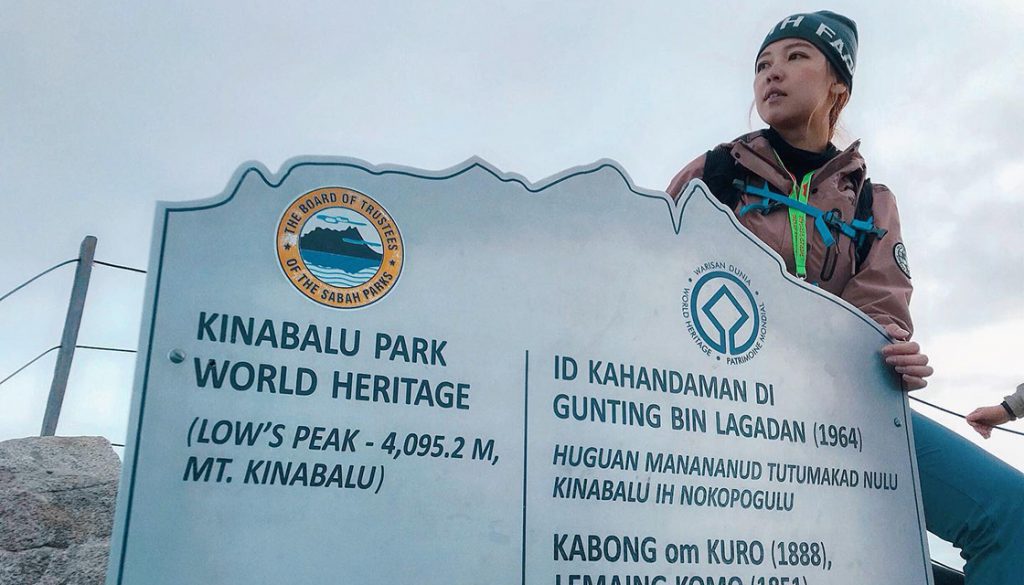From the towering peak to the vibrant wildlife, Mount Kinabalu’s climb promises to be an awe-inspiring journey that will leave you in awe and take your breath away.
The sun shines brightly, casting a warm glow on the surroundings. The air feels refreshing and pure, allowing for deep breaths of rejuvenation.
Vibrant green leaves catch the eye, creating a striking contrast against the deep blue sky. The world is brimming with possibilities, waiting to be explored.
Amidst it all, the faint rustling of small forest creatures can be heard as they navigate through the undergrowth. Welcome to the awe-inspiring Mount Kinabalu!
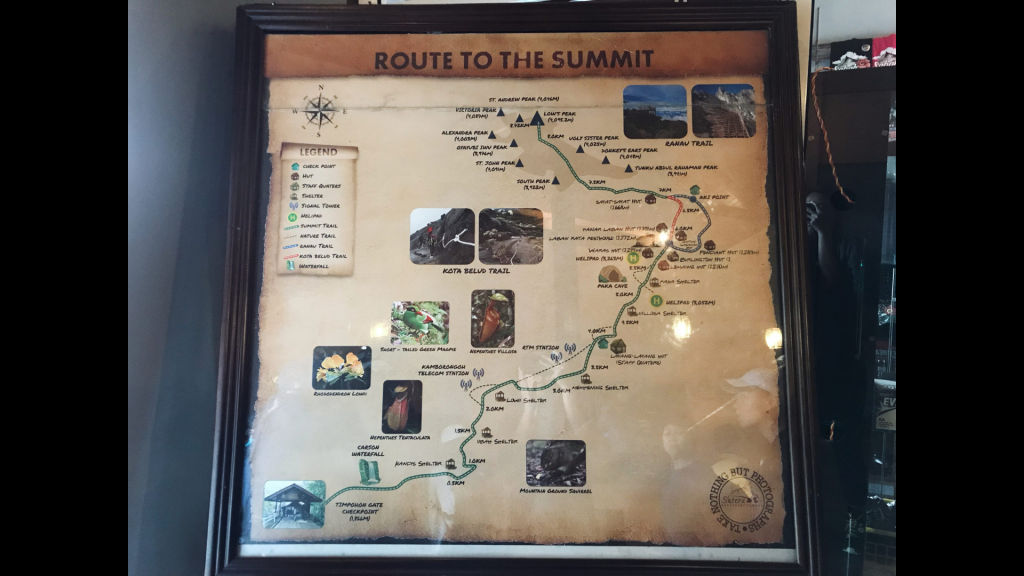
Nestled within the prestigious Kinabalu Park, a recognized World Heritage Site, Mount Kinabalu, along with the surrounding upland regions of the Crocker Range, is globally renowned for its remarkable diversity of botanical and biological species.
It is home to a wide range of plant life originating from the Himalayas, Australasia, and the Indo-Malayan region. The unique blend of these diverse origins contributes to the rich biodiversity found in this extraordinary area.
Mount Kinabalu is a must-visit destination for adventure seekers and climbers, as it stands out as one of the most popular mountains to hike in Southeast Asia. The mountain offers a breathtaking experience with its lush tropical forest, teeming with diverse flora and fauna.

What you need to know about Mount Kinabalu Climb
1. Mount Kinabalu is the highest peak in Malaysia, standing at 4,095.2m above sea level.
2. Climbing to the summit of Mount Kinabalu takes at least two days and one night, depending on the Mount Kinabalu climbing package.
3. Staying for an additional night at mountain accommodation is mandatory.
4. Climbing Mount Kinabalu requires a climbing permit, climbing insurance, a mountain guide depending on the number of climbers, and the Kinabalu Park entrance fee.

Apparel: The North Face Malaysia
What to bring?
First Ascent
1. Have enough warm clothing for the summit climb.
2. Wear lightweight clothing like t-shirts and track pants for the first ascent.
3. Wear covered walking or hiking shoes with good grip.
4. Bring a waterproof backpack to store your items like energy bars and fluids.
5. Carry a hiking pole to complement your climb.

3M arm cooler and comfort grip gloves.
Second Ascent
1. Wear warm clothing like jackets, windbreakers, long-sleeve shirts, thick trousers, and thick socks for the second ascent.
2. Wear a cap, beanie, head scarf or mask to keep warm and protect your face.
3. Wear a head torch as most of the time you have to hold the rope in the dark.
4. Wear gloves to protect your hands from rope burn and cold.
5. Carry as light as possible, with a bottle of water or sports drinks and a few energy bars.

Is Mount Kinabalu Climb actually tough?
From organizing a package and gathering hiking essentials to preparing my physical fitness and mental resilience, every step of the process remains vivid in my mind. If I were to summarize the Mount Kinabalu Climb in one sentence, it would be an ultimate test of endurance, challenging both the body and the mind.
Indeed, while the Mount Kinabalu Climb presented its fair share of challenges, it is through those very difficulties that a truly fulfilling and rewarding experience emerged. Often in the midst of pain and struggles, we discover profound moments of joy and contentment.
Without the presence of pain, how could we truly appreciate bliss? Without the experience of struggle, how could we truly comprehend and savour happiness?

First Ascent – Timpohon Gate to Panalaban
As the sun’s rays gently illuminated the entire landscape, casting a warm glow, we eagerly prepared for our adventure. Fueling ourselves with a hearty breakfast and packing a lunch for the journey ahead, we were assigned a knowledgeable mountain guide.
Before we knew it, we found ourselves on a shuttle bus, swiftly making our way to the starting point of the climb. The excitement and anticipation grew as we embarked on this remarkable expedition.
The initial leg of our ascent spanned 6 kilometres from Timpohon Gate to Panalaban, a stretch that demanded an average climbing time of approximately 5 hours.

As I hiked through the ancient primaeval forest, traversing numerous bridges and streams, the awe-inspiring scenery captivated me completely. The breathtaking vistas and natural wonders left me mesmerized.
Despite the occasional rough and bumpy path, our spirits were lifted by the abundance of thriving plant life that surrounded us. The lush and vibrant plantations added a touch of enchantment to the journey, keeping us utterly engrossed in the beauty of our surroundings.

The scenery that unfolded before us was simply delightful, so incredibly beautiful that it almost felt surreal. At times, as we took breaks along the way, I had the opportunity to encounter some of the porters and mountain guides who have dedicated over three decades of their lives to this field.
These individuals, the true athletes of the mountain, left me in awe. I was left speechless as I gazed at their immense and well-developed calf muscles. It became evident that their years of ascending and descending the majestic terrain had shaped them into formidable experts of the mountain. Their experience and resilience were truly admirable.
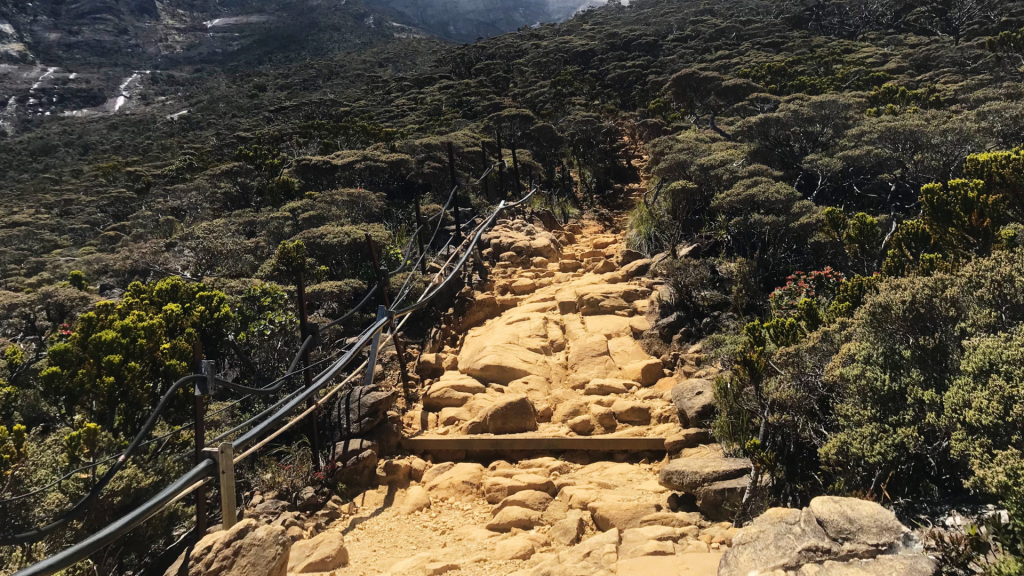

The pace at which one ascends to Panalaban varies based on individual fitness levels. Regardless of the speed, I took the opportunity to catch my breath and replenish my energy along the way.
Sipping on a few ounces of my electrolyte drink, I ensured that my body stayed hydrated and nourished during the climb. It was important to listen to my body’s needs and make adjustments accordingly, allowing me to maintain a steady and comfortable pace towards reaching Panalaban.
The temperature during the climb ranged between 20 to 25 degrees Celsius, accompanied by a gentle breeze. The pleasant climate provided a comfortable environment for the ascent, allowing for an enjoyable hiking experience.


Throughout the journey, we encountered huts along the trail where we would take breaks to rest and hydrate. Interestingly, these huts became my short-term goals, motivating me to reach each one as a milestone.
Despite the steep trail and numerous staircases, it was advised to limit breaks to no more than 5 minutes. This was because once the body cooled down, it required more energy to regain momentum.
By keeping breaks brief, we ensured that we maintained a steady pace and conserved energy for the challenging sections ahead.


At the 4-kilometre mark, we reached the Layang-Layang Shelter, a designated resting spot where we could enjoy our packed lunch. It provided a much-needed break before embarking on the final one-kilometre stretch to Panalaban.
As we savoured our meals, we couldn’t help but be entertained by the presence of friendly squirrels in the surrounding undergrowth and rest huts. These adorable creatures, accustomed to the presence of climbers, often approached in search of food. It was a delightful sight and added a touch of charm to our lunchtime break.
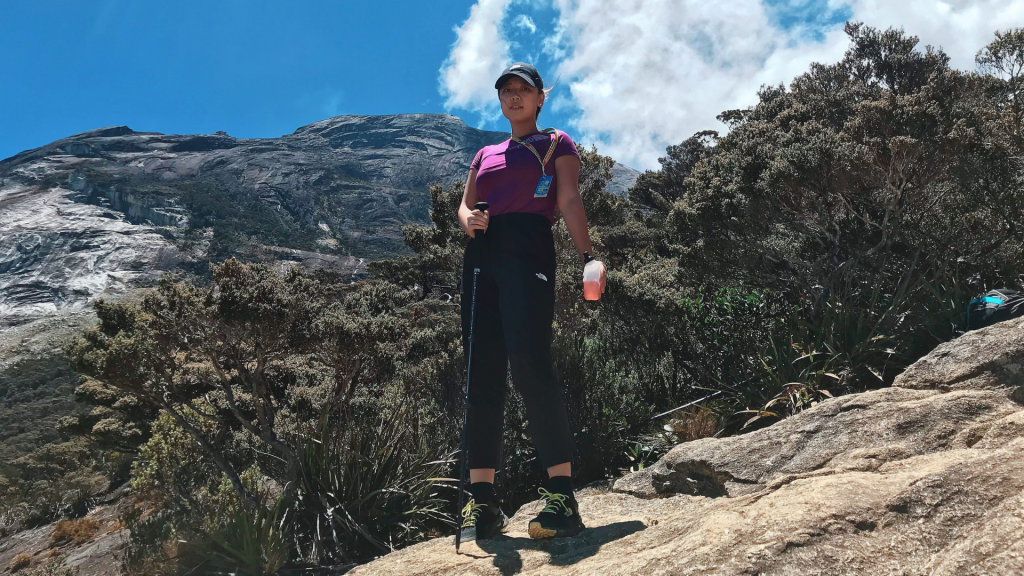


The last kilometre of the first ascent proved to be the steepest and most demanding part of the climb, but it remained manageable for climbers of all levels.
The reward for this challenge was a stunning view of unique vegetation that left me in awe. I was captivated by the Bonsai-like landscapes that resembled a Japanese garden.
The intricate patterns and miniature-like formations showcased the incredible diversity and beauty of the flora in this region. It was a truly enchanting sight that added a touch of magic to the journey.


The rocks, clouds, flowers, and lush green leaves seamlessly blended together, forming a picturesque scene of natural harmony.
I found immense joy in immersing myself in the beauty of the blossoms and the refreshing atmosphere, unable to put my emotions into words. Deep down, I knew that this panoramic view would forever be etched in my memory.
In the blink of an eye, I realized that I had come remarkably close to Panalaban.



Perched at an impressive altitude of 3,272 meters above sea level, the Laban Rata resthouse serves as a welcoming haven for climbers, providing warm accommodations and hot meals before and after the challenging ascent to the peak of Mount Kinabalu.
Within the compound, there are several smaller accommodation units available, including Gunting Lagadan Hut, Panar Laban Hut, Waras Hut, Lemaing Hut (exclusively for Malaysian climbers), and Pendant Hut (reserved for Via Ferrata climbers). After checking into our dormitory room, we took the opportunity to rest and replenish our energy.
It’s important to note that the dormitory rooms at Laban Rata are not heated, and the shared bathrooms do not provide hot water. While these amenities may be basic, they serve their purpose in providing climbers with a comfortable place to rest and recharge amidst the mountain environment.



Second Ascent – Panalaban to Low’s Peak Summit
After allowing our tired legs some well-deserved rest, we sat down for an early dinner at around 4:30 in the evening. Soon after, exhaustion took over, and we drifted off into a peaceful sleep. However, the mix of anxiety and excitement intensified as the alarm sounded at 1am.
With groggy heads, we reluctantly left the comfort of our cozy beds, hoping to avoid any severe symptoms of altitude sickness. We prepared ourselves mentally and physically for the more challenging and technically demanding climb to Low’s Peak Summit.
Before setting off for the summit, a light supper was served to provide us with some nourishment. By 2:30am, we rendezvoused with our mountain guide, ready to embark on the final ascent. With our torchlights illuminating the path, we followed the steep and continuously ascending trail to the summit, enveloped in complete darkness.



Initially, the climb to the summit involved navigating long stretches of steep wooden steps, followed by smooth granite slabs equipped with guide ropes. As we reached the final checkpoint at Sayat Sayat and continued towards Low’s Peak, we encountered large white ropes along the trails, although the slabs became less steep.
The technical difficulty of the last leg of the climb and the temperature at the summit caught many climbers by surprise. Under favourable conditions, with properly constructed staircases, the climb is generally not considered overly difficult. However, the situation can swiftly become hazardous and unpredictable if the weather worsens.
After a challenging two-hour ascent from Sayat Sayat Checkpoint, I finally tasted the sweet victory upon reaching the glacial and chilling summit. As the black sky transformed into a milky cloud, I found myself surrounded by ethereal wisps of clouds. The summit unveiled a remarkable sight of glacier-carved pinnacles rising from the smooth granite dome. Mount Kinabalu is renowned as one of the safest and most accessible peaks in the world, provided that climbers are reasonably healthy and physically fit.
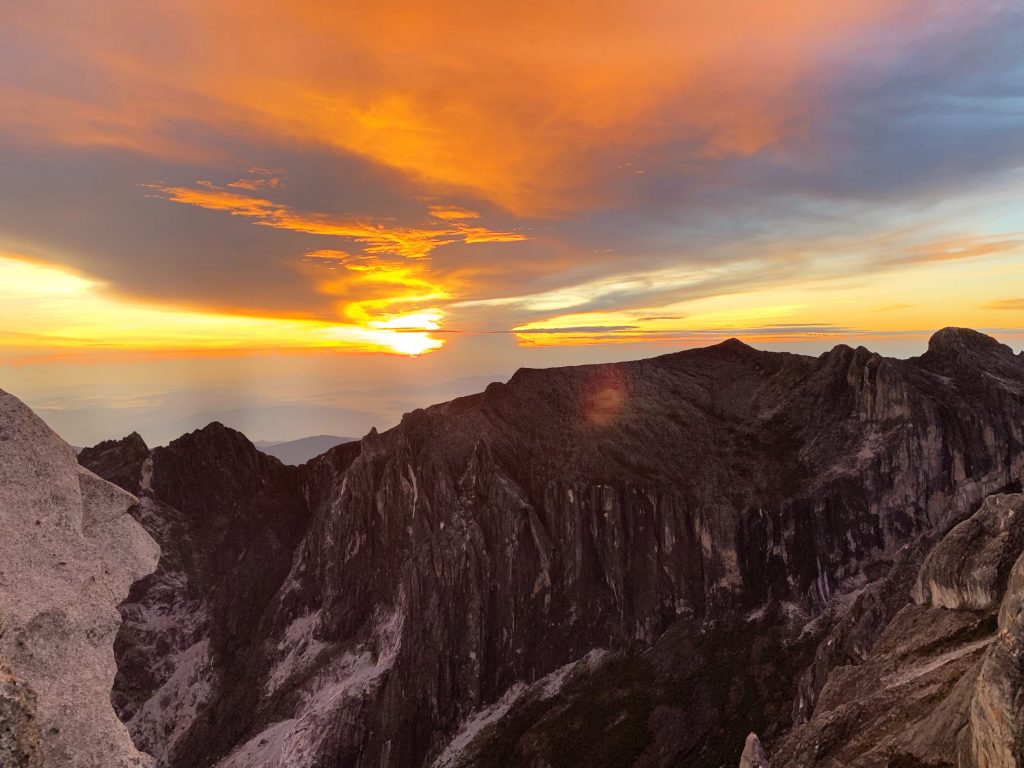
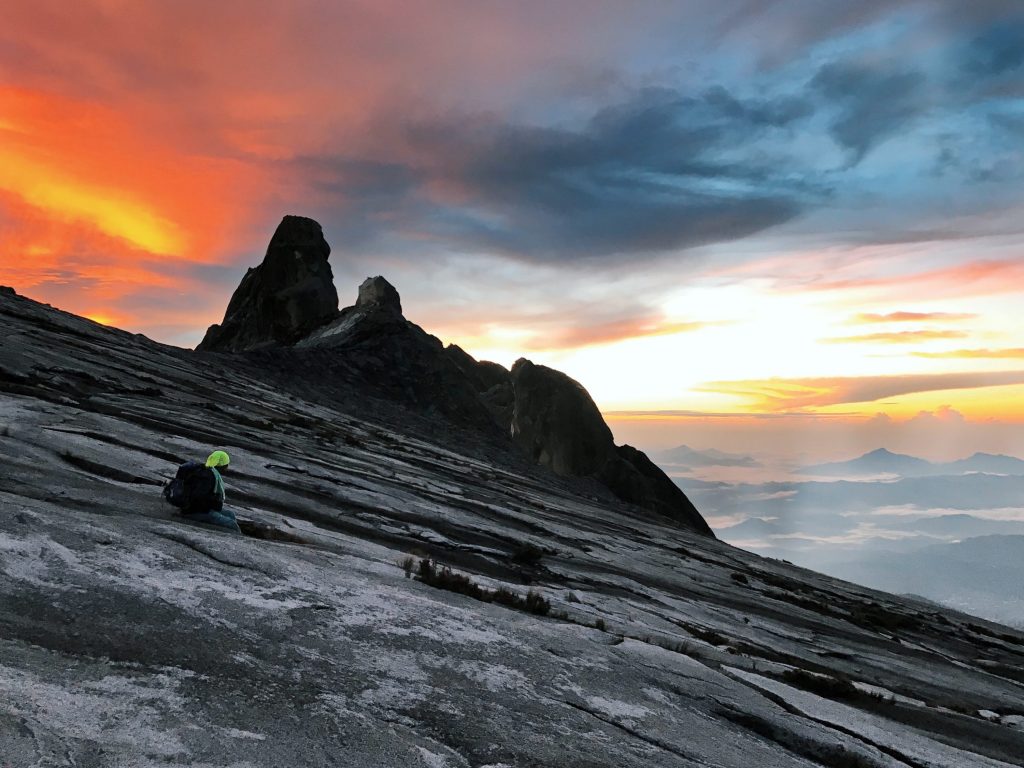
The most stunning sunrise!
In the face of adversity, it’s important to remember the sense of accomplishment and fulfillment that awaits at the summit. And finally, we made it!
We reached the summit of Low’s Peak at approximately 6 in the morning, greeted by clear skies that allowed us to witness an awe-inspiring sunrise.

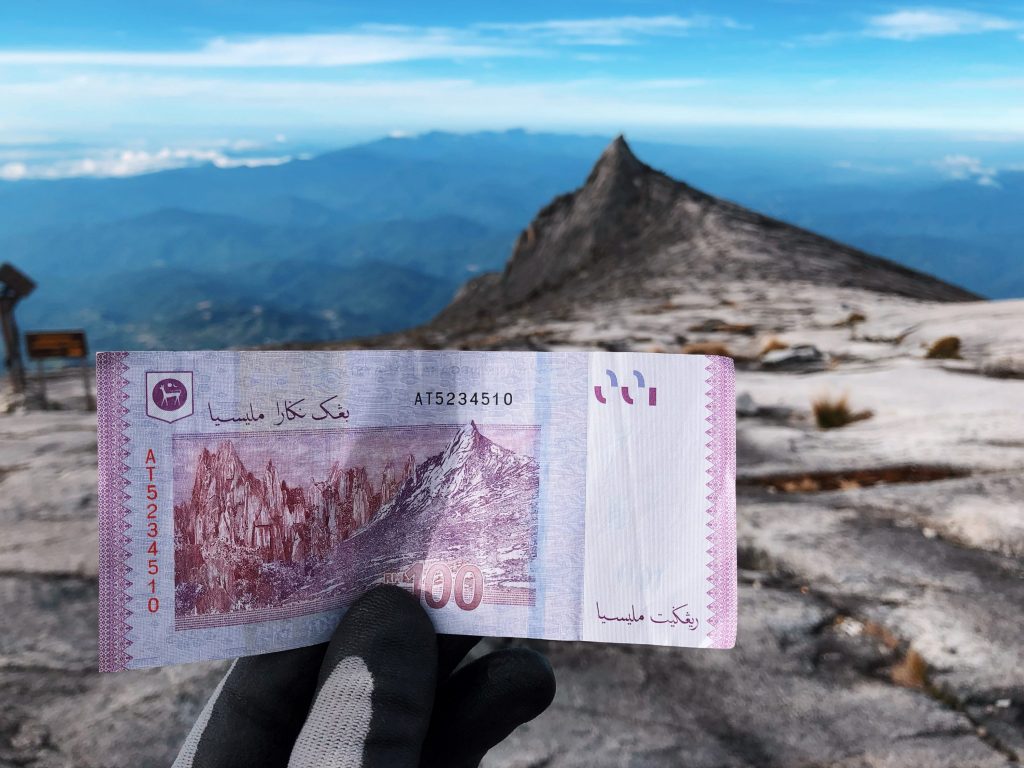
The sky transformed into a mesmerizing display of colors that we had yearned for as if capturing a fleeting moment that would never be seen again. In an instant, we were enveloped in a crimson hue, basking in a warm rosy glow.
Despite the freezing temperatures, climbers carefully retrieved their phones and cameras, eagerly capturing the striking rays of light piercing through the atmosphere, illuminating the surrounding landscape with each passing moment.

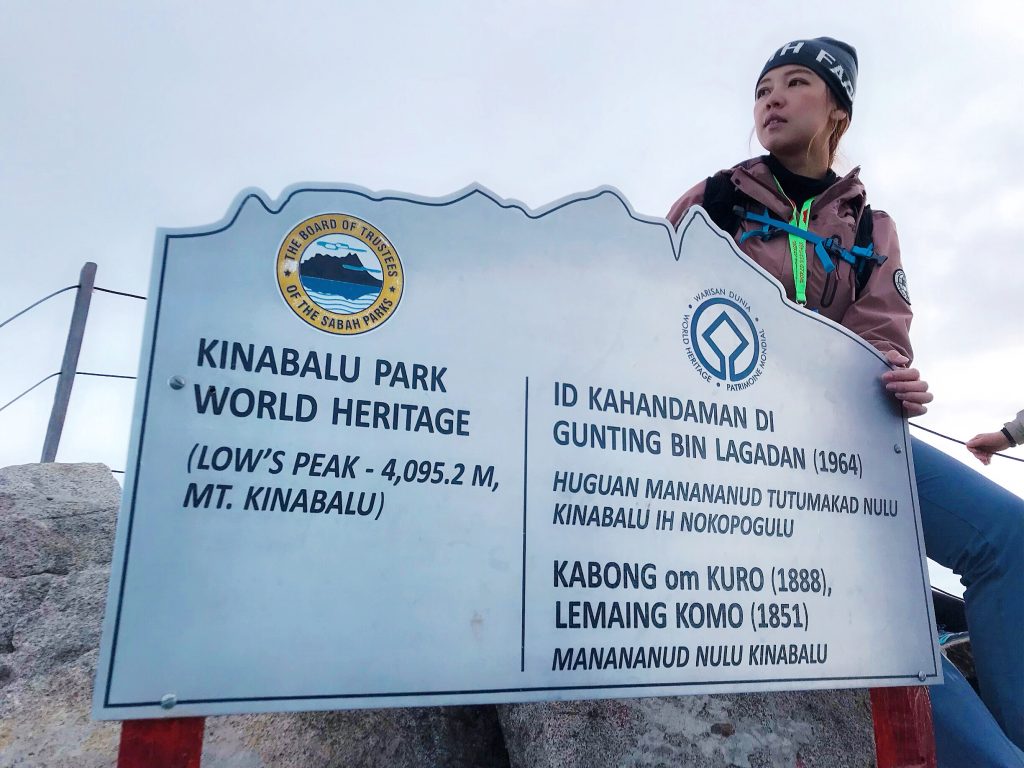
There is no summit without a struggle.
Mountains offer us more than just physical challenges; they provide us with the opportunity to push ourselves beyond our limits and experience the exhilaration of reaching the summit.
As I stand atop the tallest mountain in Malaysia and Southeast Asia, gazing upon the breathtaking vistas from Low’s Peak Summit, my heart swells with a sense of fulfilment.
Even if the climb presents its challenges, the promise of an enthralling and unforgettable experience outweighs any concerns about not reaching the peak. The journey itself, with its stunning scenery, personal growth, and the camaraderie forged along the way, is what truly matters.


